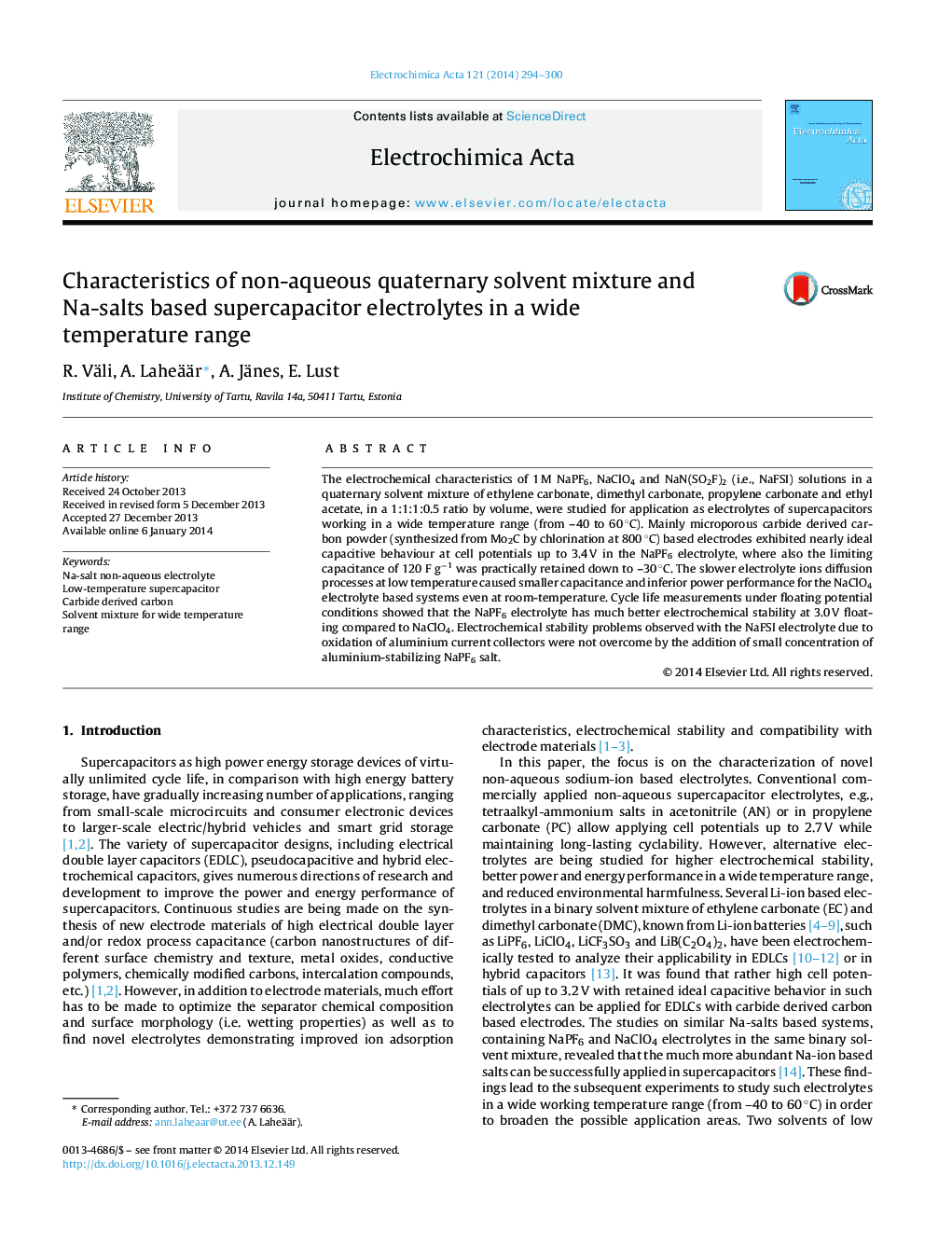| Article ID | Journal | Published Year | Pages | File Type |
|---|---|---|---|---|
| 186563 | Electrochimica Acta | 2014 | 7 Pages |
The electrochemical characteristics of 1 M NaPF6, NaClO4 and NaN(SO2F)2 (i.e., NaFSI) solutions in a quaternary solvent mixture of ethylene carbonate, dimethyl carbonate, propylene carbonate and ethyl acetate, in a 1:1:1:0.5 ratio by volume, were studied for application as electrolytes of supercapacitors working in a wide temperature range (from –40 to 60 °C). Mainly microporous carbide derived carbon powder (synthesized from Mo2C by chlorination at 800 °C) based electrodes exhibited nearly ideal capacitive behaviour at cell potentials up to 3.4 V in the NaPF6 electrolyte, where also the limiting capacitance of 120 F g−1 was practically retained down to –30 °C. The slower electrolyte ions diffusion processes at low temperature caused smaller capacitance and inferior power performance for the NaClO4 electrolyte based systems even at room-temperature. Cycle life measurements under floating potential conditions showed that the NaPF6 electrolyte has much better electrochemical stability at 3.0 V floating compared to NaClO4. Electrochemical stability problems observed with the NaFSI electrolyte due to oxidation of aluminium current collectors were not overcome by the addition of small concentration of aluminium-stabilizing NaPF6 salt.
